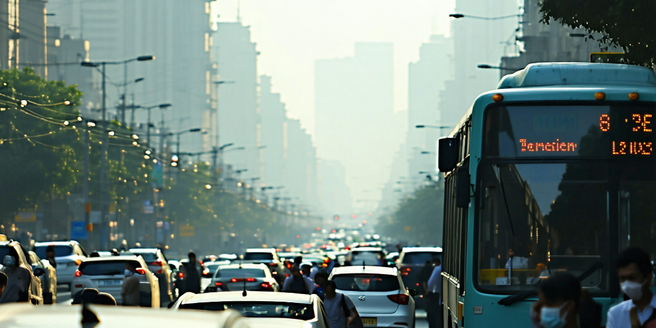
Understanding the Basics of Air Pollution
Air pollution refers to the presence of harmful substances in the atmosphere that are detrimental to human health and the environment. These pollutants can originate from natural sources, such as wildfires and volcanic eruptions, and human activities like vehicle emissions, industrial processes, and energy production. Common pollutants include particulate matter, nitrogen oxides, sulfur dioxide, carbon monoxide, and volatile organic compounds. Understanding the sources and types of pollutants is crucial for implementing effective mitigation strategies. Air pollution can lead to serious health effects, including respiratory and cardiovascular diseases, and contribute significantly to climate change through greenhouse gas emissions. Addressing air pollution requires a combination of regulatory measures, technological advancements, and increased public awareness to reduce emissions and improve air quality.
The Interaction Between Weather and Air Quality
Weather conditions play a pivotal role in determining the concentration and dispersion of air pollutants. Factors such as temperature, humidity, wind speed, and rainfall can significantly influence air quality levels. For instance, during stagnant atmospheric conditions with minimal wind, pollutants accumulate, leading to higher concentrations and deteriorating air quality. Conversely, strong winds can disperse pollutants over larger areas, sometimes reducing local pollution levels. Rainfall can help to cleanse the air by washing out particulate matter but may also lead to chemical reactions that form new pollutants. Understanding the dynamic interplay between weather patterns and air quality is essential for predicting pollution episodes and implementing timely interventions to protect public health.
Role of Temperature Inversions in Pollution Buildup
Temperature inversions occur when a layer of warm air traps cooler air beneath it, preventing pollutants from dispersing. This phenomenon often leads to a significant buildup of air pollution, particularly in urban areas surrounded by mountains or valleys. During an inversion, the confined air near the surface gets laden with pollutants from vehicles, industries, and other sources. The situation is exacerbated in the presence of weak winds and stable atmospheric conditions, resulting in smog and hazardous air quality. Temperature inversions are most common during nighttime and early morning hours, especially in the winter months. Understanding and predicting inversions are crucial for air quality management, as they can lead to severe pollution episodes that necessitate public health advisories.
How Wind Patterns Spread Pollutants
Wind patterns are a fundamental factor in the transport and dispersion of air pollutants. Depending on their speed and direction, winds can carry pollutants over long distances, affecting regions far from the original source of emissions. For example, pollutants from industrial areas can travel hundreds of miles, impacting rural and suburban locations. Coastal winds can bring marine emissions inland, while mountain-valley winds can focus pollution in narrow corridors. Changes in wind patterns, due to weather systems or geographical features, can lead to sudden variations in local air quality. Monitoring wind patterns helps predict pollution levels and implement measures to safeguard public health.
Seasonal Variations and Their Impact on Pollution Levels
Seasonal changes influence air pollution levels through variations in weather conditions and human activities. In winter, increased heating demand leads to more emissions from residential heating and power generation. Additionally, temperature inversions, common during colder months, trap pollutants close to the ground, worsening air quality. During summer, higher temperatures can enhance the formation of ground-level ozone, a major component of smog. Agricultural activities, such as crop burning and field preparation, also vary seasonally, affecting pollutant levels. Understanding these seasonal patterns is essential for anticipating pollution peaks and informing policy decisions on emission controls and public health advisories.
Mitigation Strategies Against Weather-Driven Pollution
Effective mitigation strategies against weather-driven air pollution involve a combination of technological, regulatory, and policy-driven approaches. Implementing stricter emissions standards for industries and vehicles can reduce the baseline level of pollutants. Development and deployment of clean energy technologies, like wind and solar power, can reduce reliance on fossil fuels and decrease overall emissions. Urban planning measures, such as green belts and improved public transport, can help reduce local pollution levels. Additionally, real-time air quality monitoring and forecasting systems can provide early warnings of pollution episodes, enabling timely interventions to protect vulnerable populations. Public education campaigns also play a vital role in raising awareness and encouraging behavioral changes that contribute to cleaner air.
